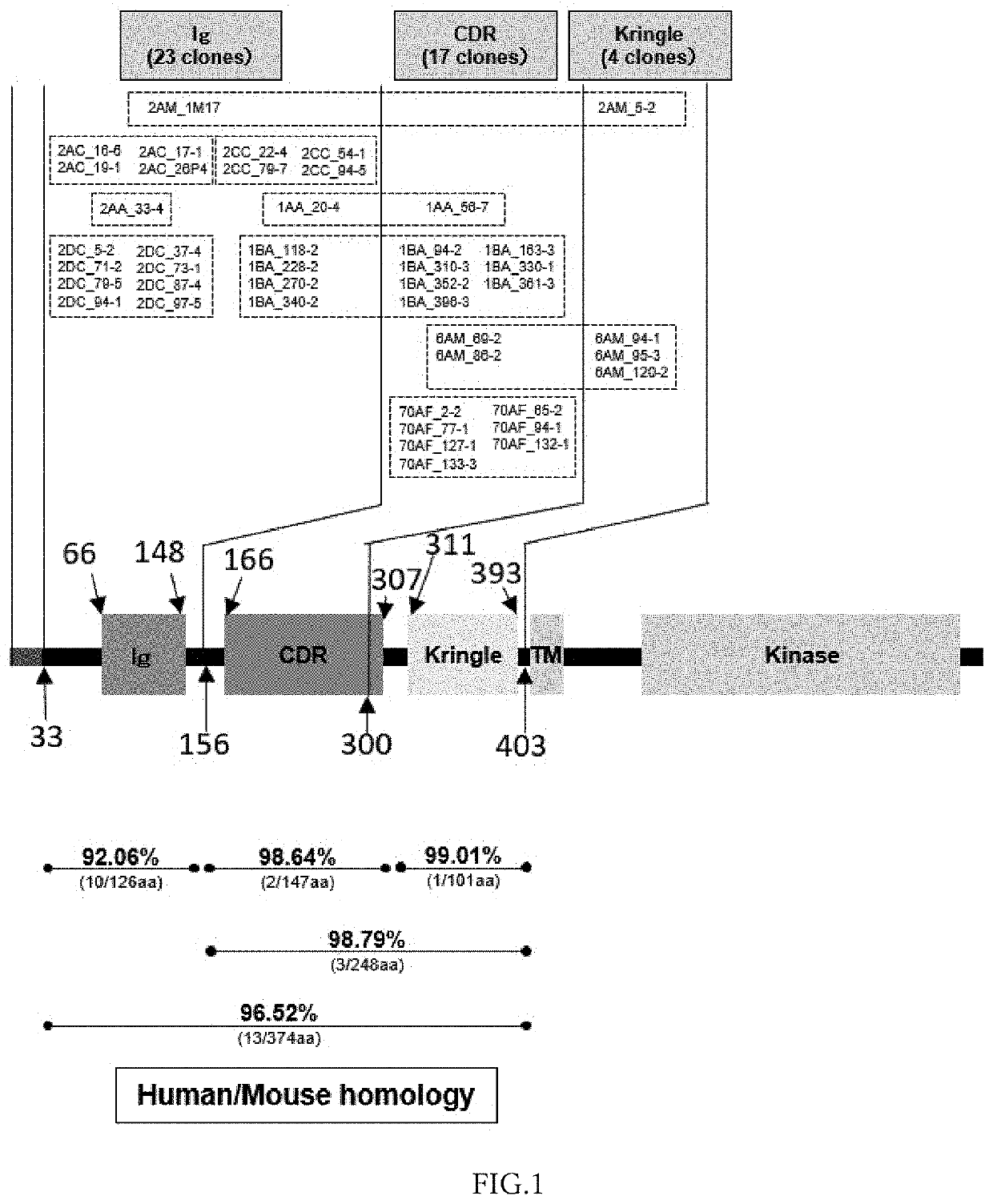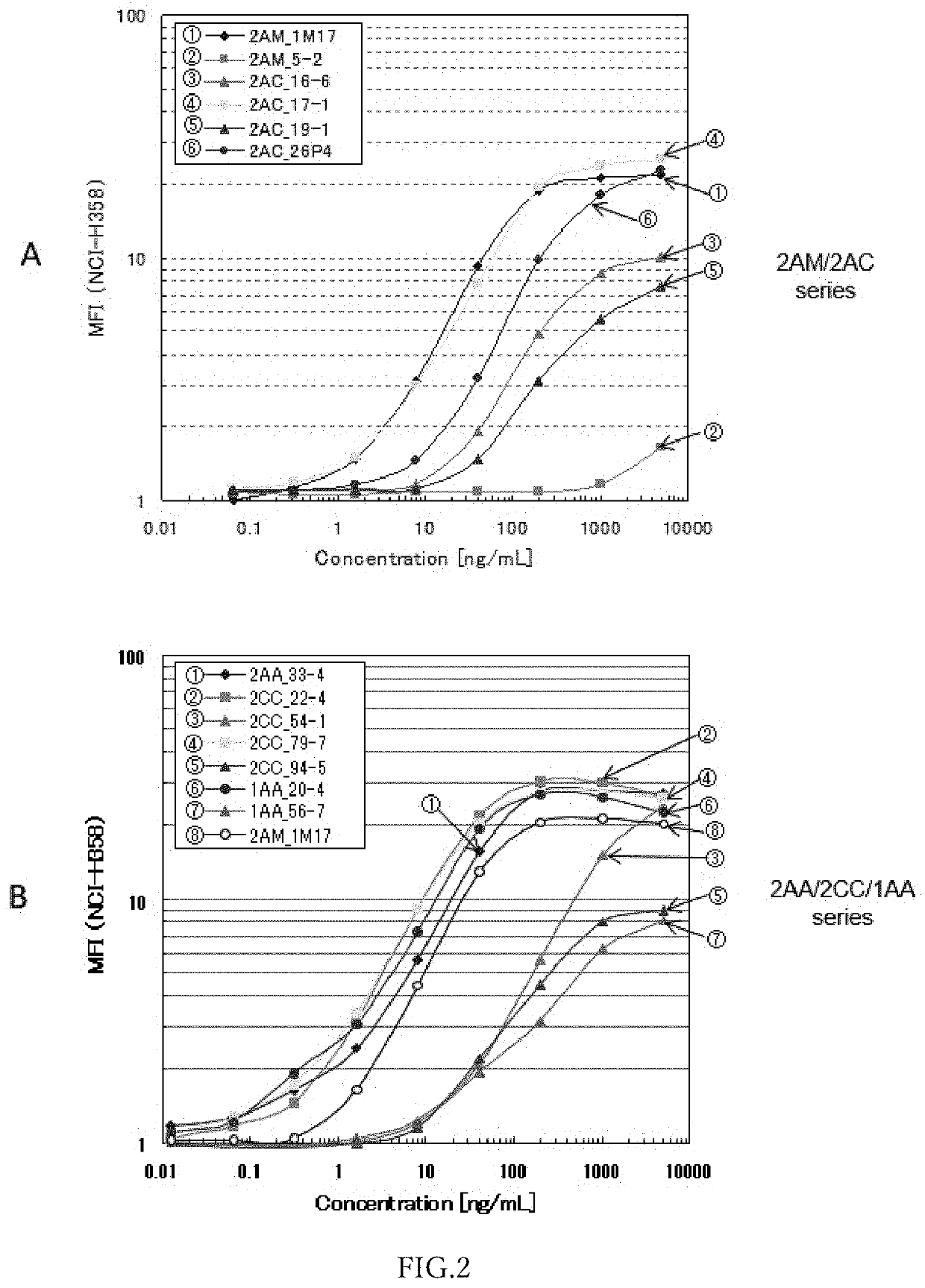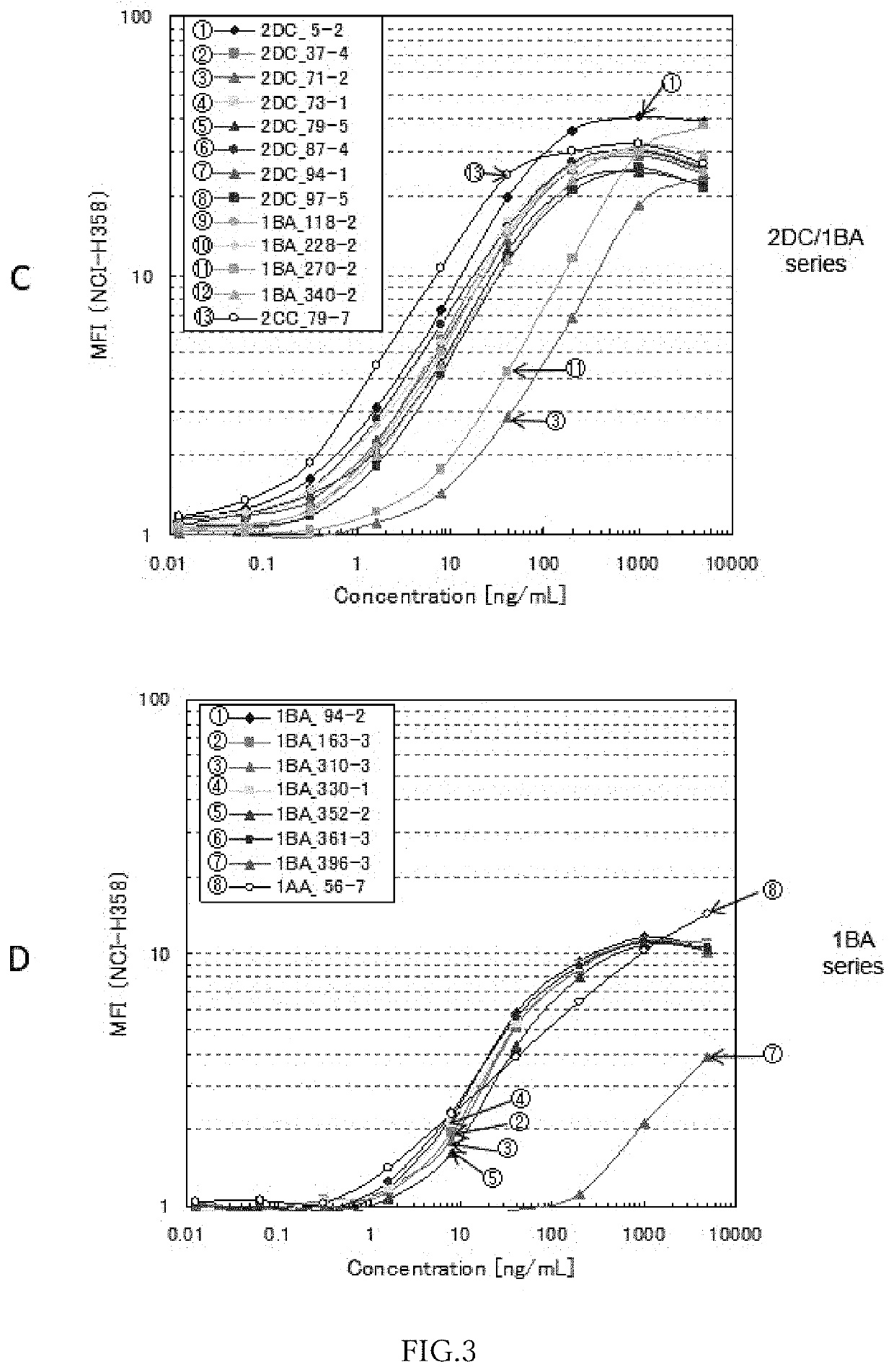Anti-ror1 monoclonal antibody, functional fragment thereof, gene, drug delivery composition, and pharmaceutical composition
a technology of monoclonal antibodies and functional fragments, applied in the direction of drug compositions, peptides, peptides/protein ingredients, etc., can solve the problems of cancer cells gaining resistance to the kinase, insufficient effect, and increased side effects, and achieve the effect of reducing the risk of recurrence, avoiding the occurrence of bypass paths, and improving the effect of anti-ror1 activity
- Summary
- Abstract
- Description
- Claims
- Application Information
AI Technical Summary
Benefits of technology
Problems solved by technology
Method used
Image
Examples
examples
[0057](1) Construction of Various Expression Construct of Human ROR1
[0058]A cDNA sequence (NM_005012.1) of the full length of a human ROR1 was cut out from pCMV6-KL6-ROR1 (OriGene Technologies, Rockville, MDs) and introduced in pCMVpuro to create pCMVpuro-ROR1. Furthermore, animal cells that are controlled by a CMV promotor and cause the full length of a human ROR1 (amino acid positions 1 to 937) or the full length of a human ROR1 extracellular region (amino acid positions 1 to 403) to express at the same time as a puromycin-EGFP fusion protein in the downstream of the IRES sequence were obtained by the method below.
[0059]A PCR product amplified by using 5′ Primer including a NotI site
(SEQ ID No. 1:5′-AATAGCGGCCGCACCATGCACCGGCCGCGCC-3′
the underline indicates the NotI site, and an underline part indicates a site to be cut by a restriction enzyme, though the repeated description will be omitted in the sequences below) and 3′ Primer including an XhoI site (SEQ ID No. 2: 5′-GCGGCTCGAGCA...
PUM
| Property | Measurement | Unit |
|---|---|---|
| temperature | aaaaa | aaaaa |
| concentration | aaaaa | aaaaa |
| pharmaceutical composition | aaaaa | aaaaa |
Abstract
Description
Claims
Application Information
 Login to view more
Login to view more - R&D Engineer
- R&D Manager
- IP Professional
- Industry Leading Data Capabilities
- Powerful AI technology
- Patent DNA Extraction
Browse by: Latest US Patents, China's latest patents, Technical Efficacy Thesaurus, Application Domain, Technology Topic.
© 2024 PatSnap. All rights reserved.Legal|Privacy policy|Modern Slavery Act Transparency Statement|Sitemap



